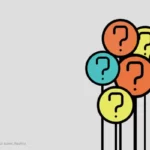
“Schindler’s List”, “Life is Beautiful”, “Million Dollar Baby” and “Philadelpia” are some of the saddest movie we’ve seen in the recent decades. No doubt, these are successful works, from the cinematographic point of view, but nobody with a healthy mind would recommend them to improve the mood.
However, recent neuropsychological studies indicate that we are mistaken because traumatic films can have a positive effect on our mind. These movies not only promote empathy, but also make us more tolerant with pain and can also generate a feeling of happiness and satisfaction with life.
The unexpected effects of sad movies on our mood
Researchers at Oxford University recruited 169 people, who were divided into small groups and mixed with strangers. Altogether they saw the movie “Stuart: A Life Backwards”, the true story of a young disabled homeless, drug addict and alcoholic. At the same time, 69 other people saw some documentaries about natural history, archeology and geology.
Before and after viewing the movies, participants had to indicate their state of mind and feelings with the rest of the strangers that took part of their group. In addition, they were subjected to a test to assess the level of pain tolerance, so that researchers were able to get an idea of the level of endorphins in their brain.
The results were that, on average, people who saw the saddest movies showed a remarkable change in their mood. Obviously, these results were predictable. What the researchers did not expect was that pain tolerance increased by 13.1%, while in those who saw the documentaries decreased by 4.6%. This means that those who saw sad movies were able to withstand 18% more intense pain than those who saw the documentaries.
Why?
The key lies in the fact that tragedy triggers the production of endorphins. In fact, it is interesting that our brain doesn’t make a big distinction between physical and emotional pain. The areas responsible for the development of physical pain are the same that also produce psychological pain. Therefore, researchers are confident that sad movies cause increased production of endorphins in the brain, which help us to better endure pain.
Moreover, endorphins also make us feel better, help us relieve stress and promote a state of tranquility and happiness. In fact, a previous study conducted by psychologists at Ohio State University that involved nearly 400 people, confirmed that after the initial impact caused by sad movies, most people feel much more happy and satisfied with their lives.
Beyond the biochemical effects, the fact is that often this kind of film cause real emotional earthquakes that make us give more value to our lives and everything that we have. These films inject a dose of reality inside us that makes us be just plain thankful to exist. And this is definitely a good reason to see a sad movie from time to time, a therapy that, like sad music, can make us feel better.
Sources:
Dunbar, R. I. et. Al. (2016) Emotional arousal when watching drama increases pain threshold and social bonding. Royal Society Open Science.
Knobloch, S. et. Al. (2012) Tragedy Viewers Count Their Blessings: Feeling low on Fiction Leads to Feeling High on Life. Communication Research; 39(4).



